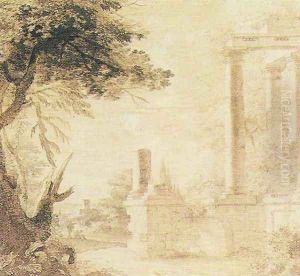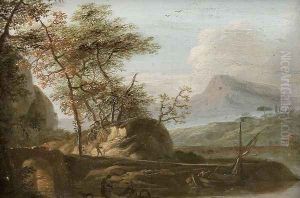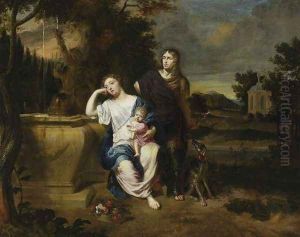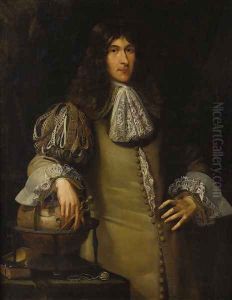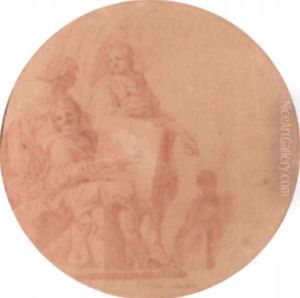Theodor Lubieniecki Paintings
Theodor Lubieniecki was a Polish painter, born in 1653, known for his contributions to the Baroque movement. His life spanned a period of significant change in Europe, as the Baroque style flourished in the 17th century, with its characteristic exuberance, grandeur, and detail, reflecting the Counter-Reformation's call for emotional engagement and religious fervor.
Lubieniecki came from a noble family and was initially educated in the humanities. However, his passion for art led him to pursue a career as a painter. He traveled extensively through Europe, which was common for artists of his time seeking to expand their experience and knowledge. His travels took him to the Netherlands, where he was likely influenced by the Dutch Golden Age of painting, known for its rich detail, vibrant color palette, and emphasis on realism and light.
Though not as widely known as some of his contemporaries, Lubieniecki's work did gain recognition in his lifetime. He painted religious and historical scenes, portraits, and genre paintings. His style incorporated the dramatic contrasts of light and dark known as chiaroscuro, a technique popularized by artists like Caravaggio. This method helped to create a sense of depth and volume in Lubieniecki's paintings, making them lively and engaging to the viewer.
Theodor Lubieniecki's death in 1729 marked the end of a career that had contributed to the rich tapestry of Baroque art. While many of his works may not have survived or been attributed to him, his skill as an artist is still recognized by those who study the period. His legacy is reflective of the broader artistic movements of his time, demonstrating the international nature of the Baroque and the exchange of ideas and styles that occurred across Europe during the 17th and early 18th centuries.
